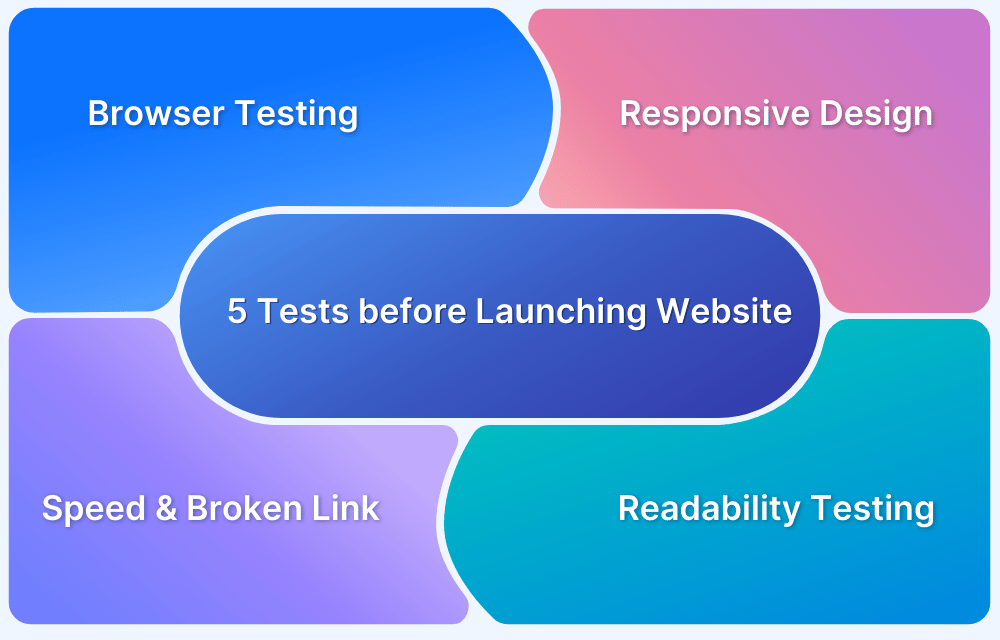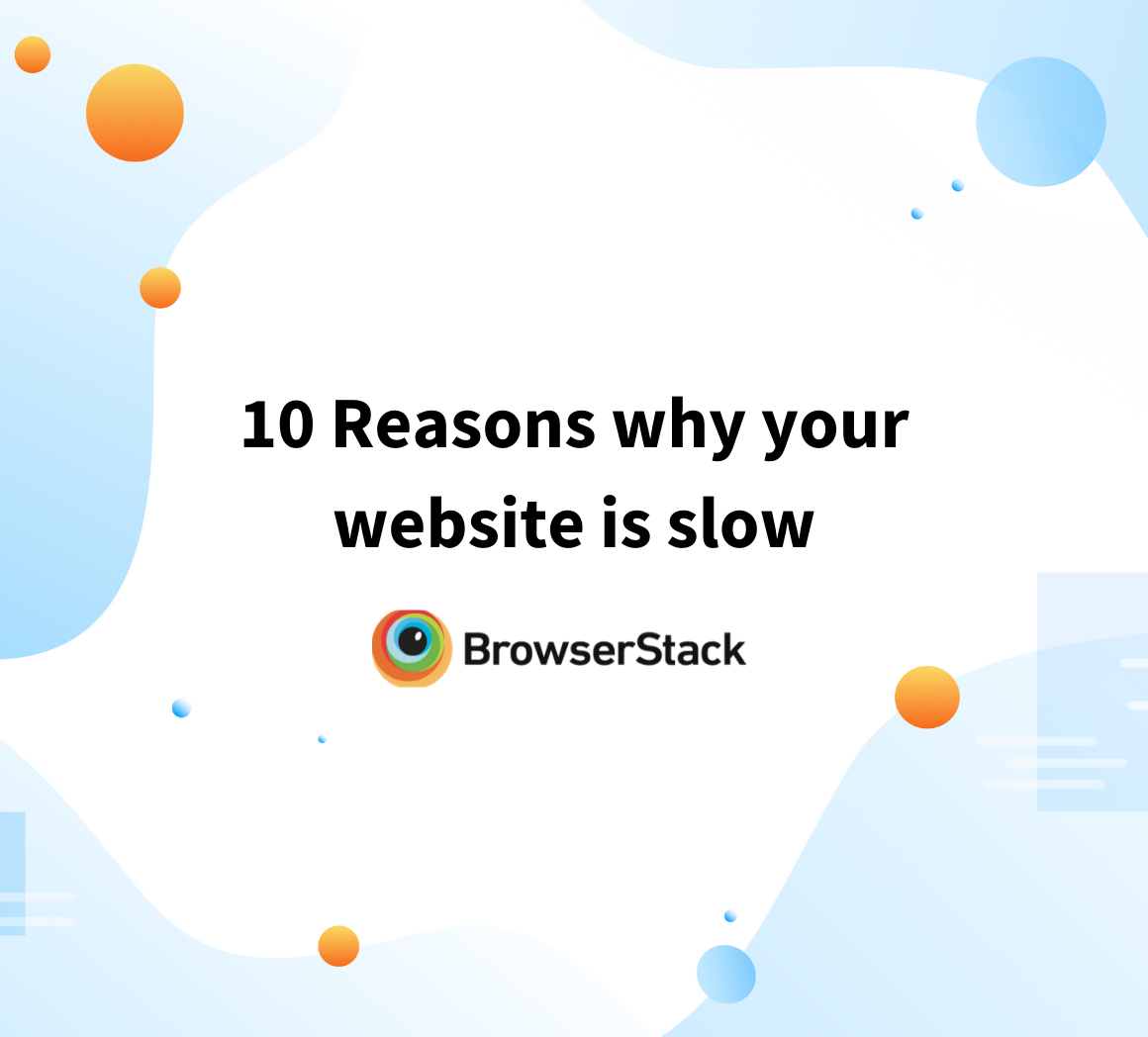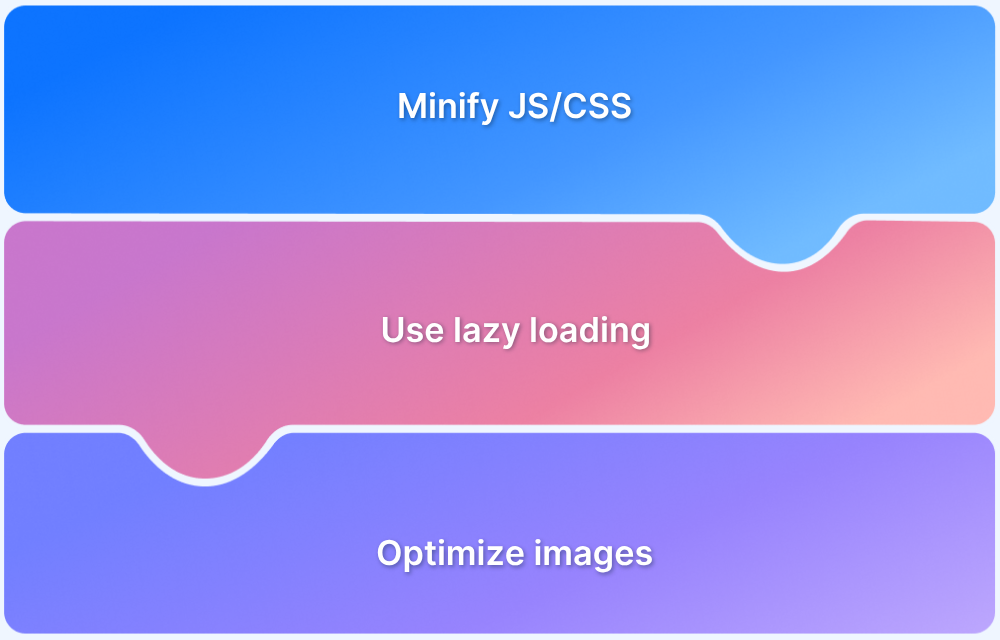A fast website improves user experience and boosts search rankings, while a slow one increases bounce rates, lowers engagement, and reduces revenue.
Overview
What is Website Performance?
Website performance refers to how quickly a website loads, responds to user interactions, and delivers a seamless browsing experience across devices. It is measured by factors like page load time, responsiveness, and visual stability.
How to Improve Website Performance?
- Optimize Images: Compress and use modern formats (WebP, AVIF) to reduce load time.
- Enable Caching: Store static files to reduce server load and speed up repeat visits.
- Minimize HTTP Requests: Reduce the number of scripts, stylesheets, and third-party resources.
- Use a Content Delivery Network (CDN): Distribute content globally for faster access.
- Optimize Code & Reduce Unused CSS/JS: Minify files and eliminate unnecessary scripts.
This article explains what page speed is, why it is important, how to measure it, and 15 proven ways to improve website performance.
What is Page Speed?
Page speed is the time it takes for a web page to fully load its content after a user requests it. It includes factors like how fast images, text, and scripts appear on the screen.
It leads to better engagement, higher user satisfaction, and improved rankings on search engines like Google.
Why is Page Speed Important?
Page speed directly impacts user experience, search engine rankings, and conversion rates. Faster pages keep users engaged, reduce bounce rates, and are favored by search engines like Google. Slow-loading pages frustrate visitors, leading to fewer conversions and lower retention.
How to Measure Website Speed and Performance?
You can measure website speed using tools like Google PageSpeed Insights, GTmetrix, or WebPageTest. These tools provide metrics such as load time, performance scores, and actionable recommendations for improvement.
Additionally, monitoring Core Web Vitals (like Largest Contentful Paint and First Input Delay) helps evaluate overall performance.
What is a Good Website Speed?
A good website speed ensures users see content and interact with the page in under 3 seconds. Ideally, the page should meet Core Web Vitals thresholds, which focus on user experience:
- Largest Contentful Paint (LCP): ≤2.5 seconds (Good), >4 seconds (Poor)
- First Input Delay (FID): ≤100ms (Good), >300ms (Poor)
- Cumulative Layout Shift (CLS): ≤0.1 (Good), >0.25 (Poor)
To achieve this, gather performance data from both desktop and mobile users, as mobile devices often require additional optimization to match desktop performance. Prioritize mobile speed since user patience is shorter on these devices.
For more details, check Google’s insights into these thresholds and their criteria.
Read More: How to perform Mobile Website Testing
Top 15 Ways to Increase Performance of a Website
1. Invest in Design
Invest in a good design team that knows the basics of combining functionality with visual appeal. The website should be easily navigable and look good at the same time.
Keep things minimal. Use dropdown menus and hamburger menus to reduce clutter, especially on mobile screens with limited space. Ensure that the most important links (product catalog, Cart, FAQs, Help, Contact) are easy to find without much scrolling. Don’t force customers to click through a series of links to get what they need.
As far as possible, try to include dynamic elements such as image carousel, animated snippets, videos, etc. Keep visitors’ eyes entertained while giving them the information they are looking for.
When it comes to text, keep it short and to the point. No one has the patience to read through long-winded paragraphs. Use short sentences, frequent paragraph breaks, and prioritize brevity to get the point across.
2. Test Cross-Browser and Cross-Device Compatibility on Real Devices
A website might be incredibly designed with lightning-fast page load speed and offering exceptional products and services. However, if a customer cannot access the site on their browser, device, or OS of choice, none of that matters. Developers and stakeholders cannot afford to let their site be incompatible with significant browsers, browser versions, devices, or platforms in widespread usage. The only way to ensure full compatibility is to run Cross Browser Testing and cross-device testing on real browsers and devices.
Testers need to check how the website renders and operates in real user conditions, for which they need to test on multiple unique browser-device-OS combinations. With close to 63,000 possible browser-platform-device combinations in popular usage, QA teams need access to a massive on-premise device lab (constantly updated with newer devices) to perform satisfactory cross browser compatibility testing.
In the absence of an in-house device lab, testers can use BrowserStack’s cloud-based infrastructure hosting of 3500+ real browsers and devices. Be it manual testing or automated Selenium testing, testers can use BrowserStack to get 100% accurate results in real-world circumstances. Testers can also leverage Cypress testing on 30+ real browser versions.
3. Choose a Robust Web Hosting Plan
It makes sense for a new website to choose a standard hosting plan. They are low-cost and designed specifically to cater to starter websites. Generally, they are built to support simple websites with a few static elements. They work fine if a site is not updated too often, especially with more advanced elements.
However, for any website to remain relevant, it must be updated and modified to remain attractive and relevant. New content, images, videos, animated gifs, etc. To keep up with these changes, stakeholders must upgrade their web hosting plan to a more potent option that can accommodate and effortlessly render frequent changes.
Doing so will provide a positive user experience and keep the site SEO compliant (frequent updates help boost a site’s rankings).
4. Optimize website speed
One might think that a few seconds of delayed page speed is no big deal, but a one-second delay leads to 11% fewer page views, a 16% decrease in customer satisfaction, and a 7% loss in conversions. Optimizing a website for maximum speed should be a major priority for web developers and testers.
Read More: How to Increase Website Speed
To identify precisely how fast a page is loading across various browsers and devices, devs and QAs can use SpeedLab, a free tool from BrowserStack. It is designed for running website speed tests on multiple real browser-device combinations. Simply enter the URL, and the tool will check site speed across a range of widely used device-browser combinations.
5. Reduce HTTP Requests
Every component required to render a web page fully generates an HTTP request to the server. Therefore, if ten CSS files are necessary, then ten HTTP GET requests would be generated for a single page. Obviously, more HTTP requests will slow down website performance.
To reduce the HTTP request overhead, devs can combine files, particularly CSS and JS files. They can also use CSS sprites – combining smaller images into one big image. Simply adjust the background-position CSS attribute to display the required image.
Essentially, do whatever is possible to reduce HTTP requests for a web page to load faster without compromising on quality.
6. Don’t use inline CSS and JavaScript
Browsers, by default, cache external JS and CSS files. If someone navigates away from a page, they will already have stylesheets and JS files cached on their browser, eliminating the time needed to download them again.
Using inline CSS and JS prevents this action from occurring, which will slow down web performance unnecessarily.
Read More: Top Responsive CSS Frameworks
7. Decentralize loading of website assets and features
User third-party web services to load some of the site assets and features. This reduces the burden on a single web server because it shares the bundle of page components with another one.
For example, use Flickr to render images, Feedburner to manage RSS feeds, etc. However, be mindful of the implication of letting third-party services manage website data. This approach is not recommended when dealing with sensitive information (customer identification data, financial data, etc.)
Try Cross Browser Testing for Free
8. Keep an eye on web server performance
The web server is what runs the show. It sends and receives HTTP requests and responses that serve the correct page components and ensure the site does what it is meant to. Naturally, monitoring web server performance is key to ensuring that the website is working at peak levels.
Check web server stats as frequently as humanly possible. If performance levels dip, make whatever changes are necessary. Benchmark performance before and after implementing optimization measures to make sure that efforts are actually yielding results.
Benchmarking is also necessary to determine if the server needs an upgrade or if the site needs to migrate to another server. As mentioned before, when the website updates, its current server may be ill-equipped to handle more elements, higher traffic, and other aspects of its day-to-day functioning.
9. Write Mobile-First Code
Start by designing and developing your website for mobile devices. Mobile-first code ensures your site is lightweight and efficient, focusing on essential features for smaller screens.
This approach also improves loading speed for all devices, as mobile optimization often trims unnecessary elements.
10. Load JavaScript Asynchronously
Loading JavaScript asynchronously prevents scripts from blocking other parts of your page from loading. This reduces the time it takes for users to interact with your site. Use the async or defer attributes for external scripts to prioritize critical resources.
Read More: How to Reduce Page Load Time in Javascript
11. Consider Using Prefetch, Preconnect, and Prerender Techniques
These techniques prepare resources and connections in advance, reducing loading times and creating a smoother user experience.
- Prefetch: Preloads resources the user is likely to need next, reducing waiting time.
- Preconnect: Establishes early connections to servers, speeding up the resource-fetching process.
- Prerender: Preloads an entire page the user is likely to visit next, making transitions seamless.
12. Optimize Your Images
Compress images using formats like WebP or JPEG and use responsive image techniques to serve appropriately sized files based on screen size. Leverage lazy loading to only load images as they enter the viewport.
Read More: How to make images responsive
13. Evaluate Your Current Hosting Provider
Your hosting provider impacts server response time and overall speed. If your site is slow despite optimization, consider upgrading to a faster hosting plan or switching to a provider that offers better performance. Choose a managed hosting service or a Content Delivery Network (CDN).
14. Use browser HTTP caching
Enable HTTP caching to store static resources, like images, CSS, and JavaScript, in a user’s browser. This allows returning visitors to load your site faster since these resources don’t need to be downloaded again. Set cache expiration policies to balance performance and freshness.
15. Use Real Devices to Test Performance of your Website
Simulating performance on real devices provides accurate insights into how your site behaves across different screen sizes, operating systems, and browser configurations. Tools like BrowserStack allow you to test your website on actual devices, ensuring optimal performance for all users, regardless of their environment.
Conclusion
Knowing how to improve website performance is a pivotal part of website development. Given the rate of competition, website creation and publication is no longer a one-and-done deal. Consistent optimization is mandatory for a site to stay on top of its competition and keep users happy enough to keep coming back. Use the pointers in this article to start with attempts to improve website performance, and give a site its best shot at success.
For comprehensive website testing across various devices, browsers, and versions, consider using tools like BrowserStack. It offers tools like Live for manual testing on real devices, Automate for running automated tests at scale, Percy for visual testing, and Responsive Tool to check how your website adapts to different screen sizes and resolutions.
BrowserStack’s suite of testing tools helps catch issues at the earliest and optimize your website for a flawless user experience.







